October 1 2020
Komang Astika & Tom Goreau
Biorock Indonesia
Pemuteran, Bali, Indonesia
Corals growing on Biorock reefs in Indonesia that survived severe 2016 bleaching, and bleached again completely in 2020, have now fully recovered. Bleaching on Biorock was noticeably less, recovery faster, and mortality much less than on nearby reefs. In contrast to almost complete survival on Biorock reefs, most corals on nearby reefs bleached and died, as seen previously during severe bleaching mortality events in the Maldives (1998), Thailand (2010), and Indonesia (2016),
Below are photos taken by Komang Astika at the Karang Lestari Biorock Project at Pemuteran, Bali, taken during maximum bleaching in May 2020. Many corals that are fully bleached are healthy and feeding, while some highly vulnerable species are not bleached at all. Four months later, in September 2020, coral colors showed complete recovery (see videos below).
Biorock technology is the only method that protects corals from dying after complete bleaching from extreme heat shock. Biorock increases settlement, growth, survival, biodiversity, and resistance to extreme stress of corals and all marine organisms.
2020 has been a strong La Niña year, in which global sea surface temperatures are BELOW normal. The next strong El Niño will push temperatures well ABOVE bleaching mortality levels in many places. The next El Niño just seems to be starting, and worse bleaching lies ahead. Biorock Coral Reef Arks need to be urgently established in every coral reef region to save coral reef ecosystems from mass extinction, which will be inevitable unless global warming is immediately reversed.
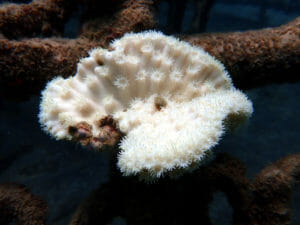
Fully bleached Turbinaria with healthy polyps expanded and feeding, May 2020
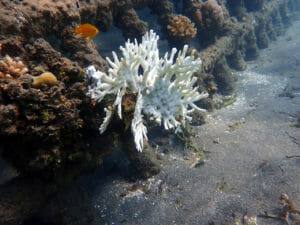
Fully Bleached but healthy Millepora, May 2020. Millepora usually dies when fully bleached. White sand on the black volcanic sand bottom is limestone produced by prolific growth of coralline algae around the Biorock reef
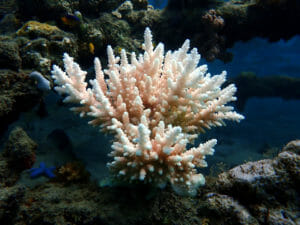
Partially bleached Acropora, May 2020
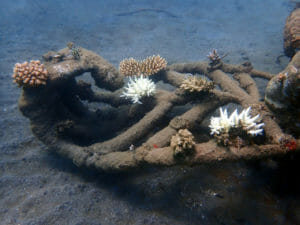
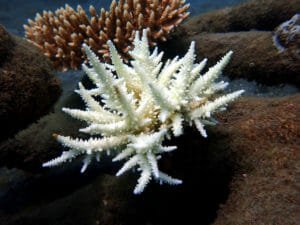
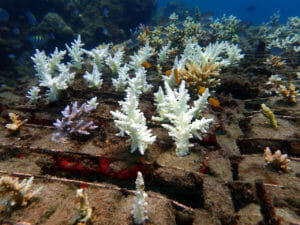
Bleached and normal Acropora, May 2020
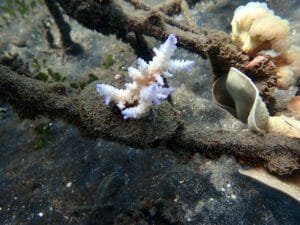
Bleached corals, May 2020

Fully bleached Acropora with normal color Acropora in background, May 2020
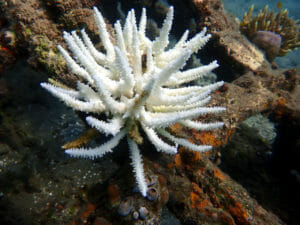
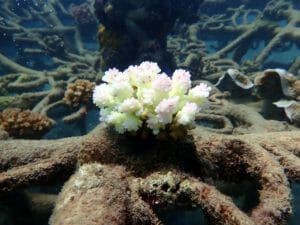
Fully bleached Pocillopora with normal Pocillopora in background, May 2020
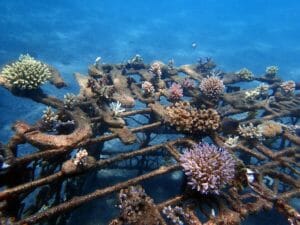
Biorock corals survived bleaching and rapidly regained their full colors by September 2020. Photo by Komang Astika.
Two videos of fully recovered Biorock reefs, filmed by Komang Astika, at the Karang Lestari Project, Pemuteran, Bali, September 26 2020 show complete recovery, vibrant colors and abundant fish.